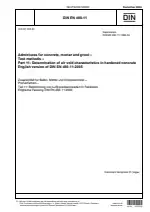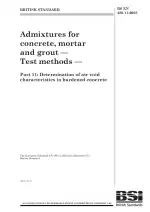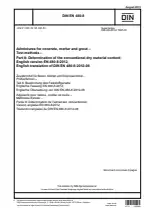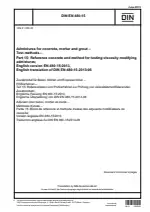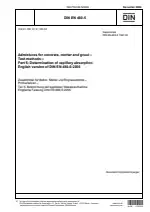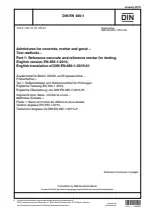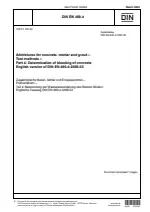Admixtures for concrete, mortar, and grout - Test methods - Part 11: Determination of air void characteristics in hardened concrete
Also Known As:
The DIN EN 480-11 standard focuses on testing the air void characteristics in hardened concrete. The purpose of this standard is to determine the air-void structure in a concrete sample that has entrained air. It provides specific parameters for describing the air-void structure such as total air content, specific surface of the air void system, spacing factor, air-void size distribution, and micro air content.
The total air content refers to the overall amount of air present in the concrete sample. The specific surface of the air void system measures the surface area of the air voids relative to the total volume of the concrete. The spacing factor describes the distance between adjacent air voids, which is an important factor for the durability and strength of the concrete.
The air-void size distribution parameter calculates the size range of the air voids present in the concrete sample. This information is crucial for understanding the potential for freeze-thaw damage and can help in developing concrete mix designs that have better resistance to such damage.
Lastly, the micro air content measures the amount of air trapped within the cement paste itself, excluding any larger air voids. This parameter is important for assessing the quality of the cement paste and its ability to resist the effects of freezing and thawing.
| Descriptors | Additives, Air voids, Air-entraining admixtures, Composition, Concrete admixtures, Concretes, Construction materials, Definitions, Determination, Grouting mortar, Mathematical calculations, Microscopic analysis, Mixed processes, Mortars, Production, Properties, Ratings, Solid concrete, Symbols, Test specimens, Testing |
| ICS Codes | 91.100.30 - Concrete and concrete products |
| Language(s) | English |
| File Size | 307.2 KB |

